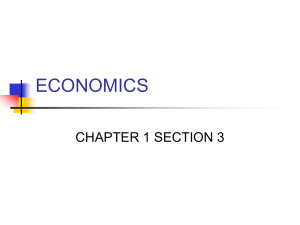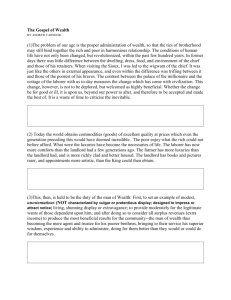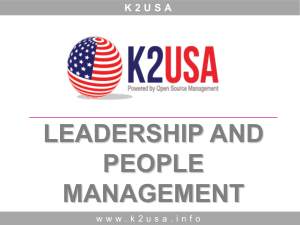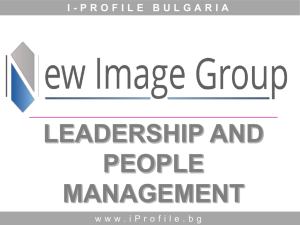LAZ B2 Simulation Listening Exam 01 April 2012
advertisement
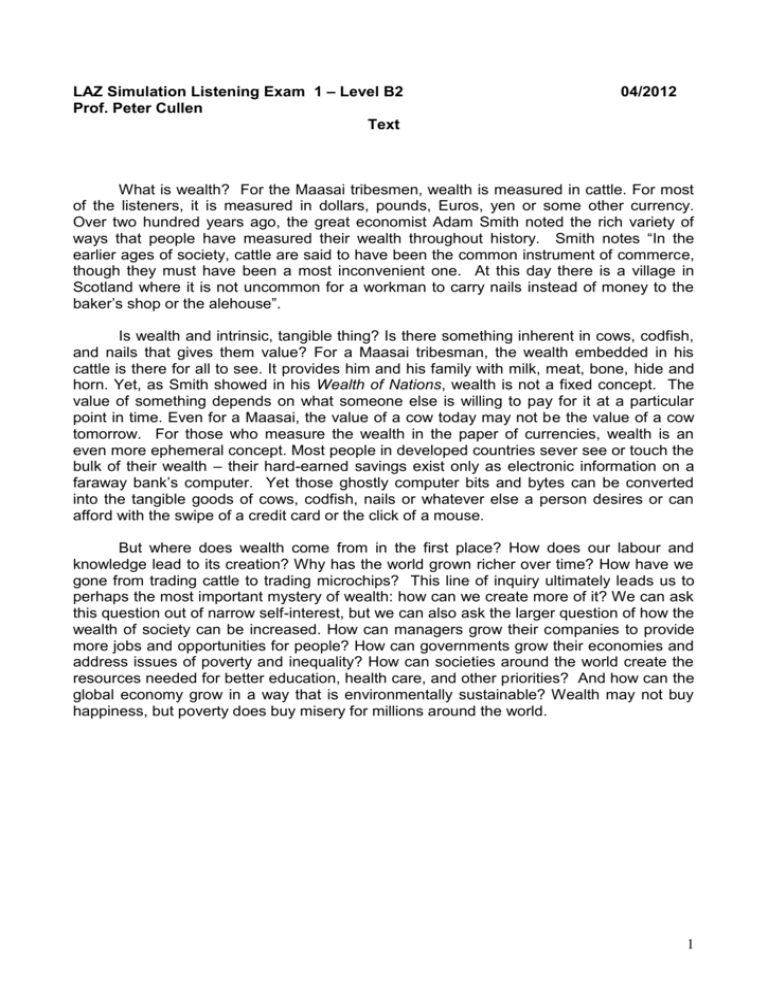
LAZ Simulation Listening Exam 1 – Level B2 Prof. Peter Cullen Text 04/2012 What is wealth? For the Maasai tribesmen, wealth is measured in cattle. For most of the listeners, it is measured in dollars, pounds, Euros, yen or some other currency. Over two hundred years ago, the great economist Adam Smith noted the rich variety of ways that people have measured their wealth throughout history. Smith notes “In the earlier ages of society, cattle are said to have been the common instrument of commerce, though they must have been a most inconvenient one. At this day there is a village in Scotland where it is not uncommon for a workman to carry nails instead of money to the baker’s shop or the alehouse”. Is wealth and intrinsic, tangible thing? Is there something inherent in cows, codfish, and nails that gives them value? For a Maasai tribesman, the wealth embedded in his cattle is there for all to see. It provides him and his family with milk, meat, bone, hide and horn. Yet, as Smith showed in his Wealth of Nations, wealth is not a fixed concept. The value of something depends on what someone else is willing to pay for it at a particular point in time. Even for a Maasai, the value of a cow today may not be the value of a cow tomorrow. For those who measure the wealth in the paper of currencies, wealth is an even more ephemeral concept. Most people in developed countries sever see or touch the bulk of their wealth – their hard-earned savings exist only as electronic information on a faraway bank’s computer. Yet those ghostly computer bits and bytes can be converted into the tangible goods of cows, codfish, nails or whatever else a person desires or can afford with the swipe of a credit card or the click of a mouse. But where does wealth come from in the first place? How does our labour and knowledge lead to its creation? Why has the world grown richer over time? How have we gone from trading cattle to trading microchips? This line of inquiry ultimately leads us to perhaps the most important mystery of wealth: how can we create more of it? We can ask this question out of narrow self-interest, but we can also ask the larger question of how the wealth of society can be increased. How can managers grow their companies to provide more jobs and opportunities for people? How can governments grow their economies and address issues of poverty and inequality? How can societies around the world create the resources needed for better education, health care, and other priorities? And how can the global economy grow in a way that is environmentally sustainable? Wealth may not buy happiness, but poverty does buy misery for millions around the world. 1 LAZ Simulation Listening Exam 1 – Level B2 04/2012 Prof. Peter Cullen ___________________________________________ Name, Date, and Registration Number Questions: Answer all 5 of the following questions. SIMPLE AND CORRECT IS BETTER THAN COMPLICATED AND WRONG. USE SHORT PHRASES AND SENTENCES. This exam requires interpretation and analysis. It is designed to test your ability to apply what you hear to possible discussion areas. 1. How do Maasai tribesmen and westerners view wealth differently? 2. What are the differences between tangible wealth and paper currencies? 3. Discuss the role of technology in managing wealth. 4. What does the author consider to be the most important question regarding wealth? 5. Which economic operators need to be concerned with questions of how to grow wealth? List 3. 2 LAZ Simulation Listening Exam 1 – Level B2 Prof. Peter Cullen 04/2012 Answer Sheet 1. How do Maasai tribesmen and westerners view wealth differently? For the Maasai tribesmen, wealth is measured in cattle. For most of the listeners, it is measured in dollars, pounds, euros, yen or some other currency. For a Maasai tribesman, the wealth embedded in his cattle is there for all to see. It provides him and his family with milk, meat, bone, hide and horn. Most people in developed countries sever see or touch the bulk of their wealth – their hard-earned savings exist only as electronic information on a faraway bank’s computer. 2. What are the differences between tangible wealth and paper curriencies? Tangible wealth has an immediate use/utility. Paper wealth is converted into something wanted or needed. 3. Discuss the role of technology in managing wealth. Technology allows wealth to be transferred and stored more easily. 4. What does the author consider to be the most important question regarding wealth? How to make more of it. 5. Which economic operators need to be concerned with questions of how to grow wealth? List 3. Managers Governments Societies And the global economy. 3




